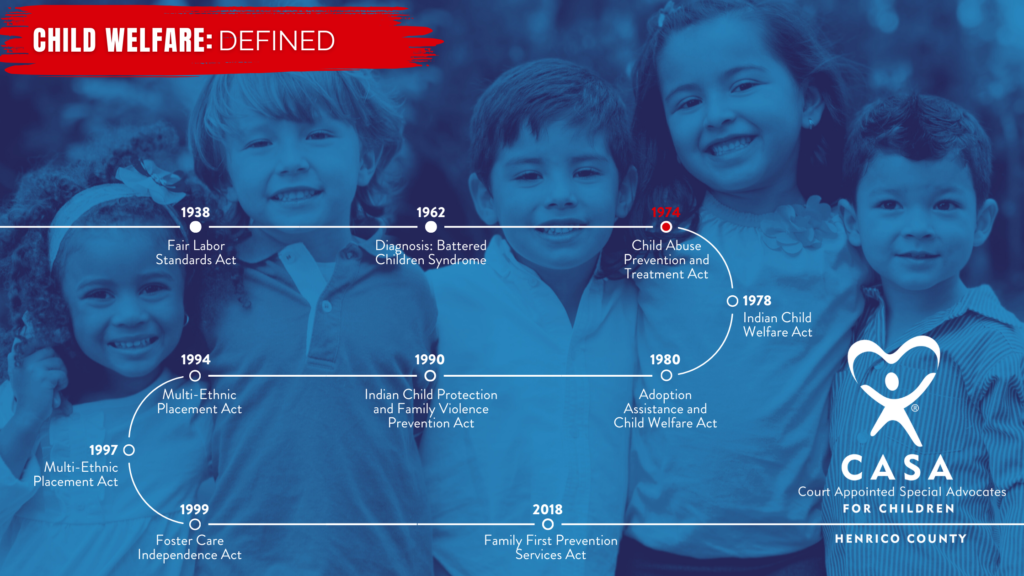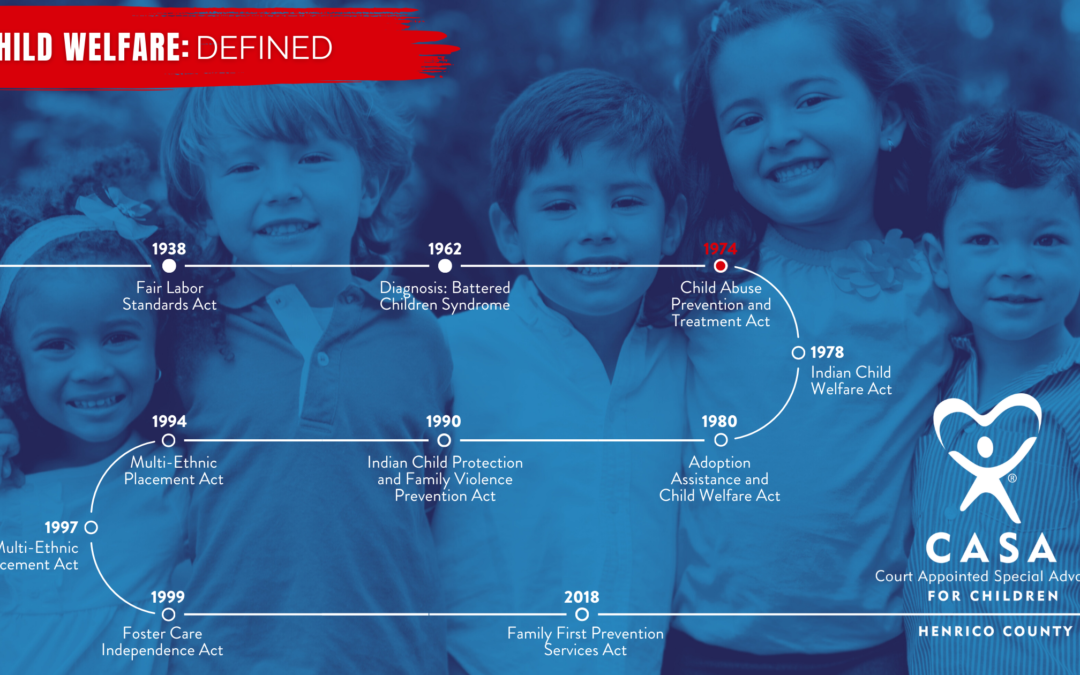
Have you ever wondered how child abuse laws came to be in the United States? It’s a pretty fascinating ride through history, especially when you consider that these laws are relatively new compared to other legal protections we take for granted. In recognition of Child Abuse Prevention Month, our April blog posts highlight some key moments that paved the way for the protections we have today.
Let’s pick up where we left off in Part 1 and explore the next significant milestone in the world of child welfare.
1974
In the seventies, the Child Abuse Prevention and Treatment Act (CAPTA) entered the scene. This was a game-changer because, for the first time, the federal government officially defined what constituted child abuse and neglect. It also authorized funding to public agencies and nonprofit organizations that undertake activities to prevent, assess, investigate, prosecute, and treat child abuse and neglect.
CAPTA set the groundwork for identifying and addressing these issues on a national level, providing much-needed clarity and guidance to professionals and agencies tasked with protecting children. It didn’t just stop there, though. Over the years, it has undergone amendments and updates to strengthen its provisions and better respond to evolving challenges.
Specific to our work at Henrico CASA, the 1997 amendment is especially important. It includes Court Appointed Special Advocates as potential Guardians ad Litem.
We hope that you are seeing the historical progression of child welfare laws as a growing understanding of the complexities of child welfare. But the journey didn’t end with CAPTA. Next week’s post will demonstrate a continued commitment to ensuring the well-being of all children.








